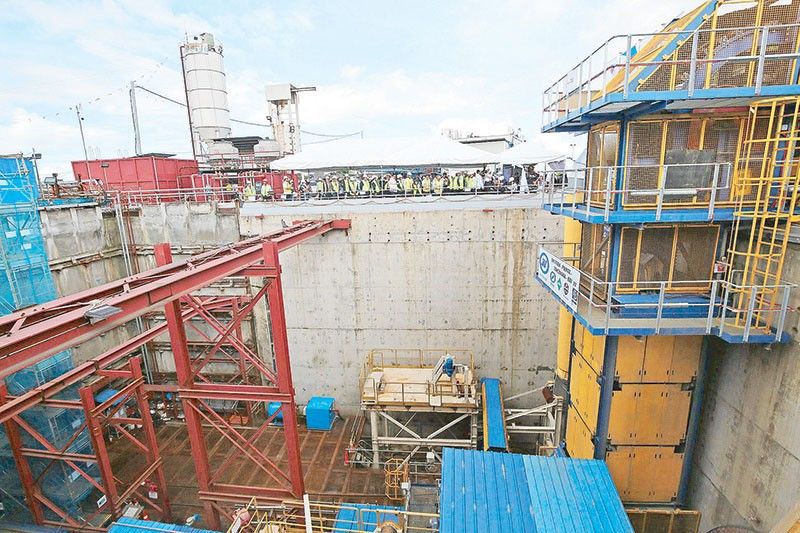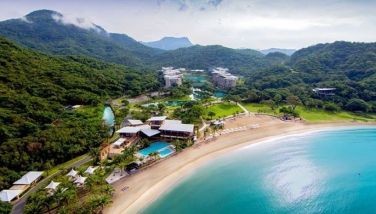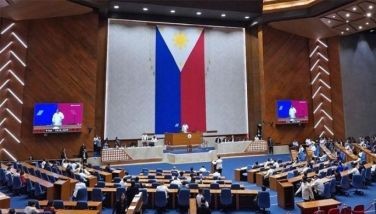Kishida visits Japan-aided Metro Manila subway project

MANILA, Philippines — Japan Prime Minister Fumio Kishida visited the construction of the Metro Manila subway in Valenzuela City yesterday after his address at the House of Representatives.
On X (formerly Twitter), Japanese Ambassador to the Philippines Koshikawa Kazuhiko posted photos of Kishida’s visit at the “iconic” Metro Manila Subway, which he described as the “Project of the Century.”
“This 50-year Filipino dream will be a reality thanks to our strong mutual trust and cooperation. Can’t wait for you to hop on the ‘Japanese quality’ ride, too!” the ambassador said of the project funded under the Japan International Cooperation Agency (JICA), where he had served as executive senior vice president.
In his address before Congress during its special joint session yesterday, Kishida mentioned the subway project as the “Philippines’ first subway system… with Japanese assistance.”
“I am proud of the fact that Japan can play a part in this subway project, which is said to be a 50-year dream,” Kishida said.
The Prime Minister also touted Japan’s ¥600 billion or P224-billion public-private assistance to the Philippines that would run through March 2024 to “support economic and social development.”
“Japan is one of the largest investors in the Philippines on a private-sector basis. The public and private sectors are eagerly working together to support the economic growth of the Philippines,” Kishida said.
Meanwhile, Foreign Affairs Secretary Enrique Manalo and Kazuhiko on Nov. 3 signed and exchanged Japan’s “Diplomatic Notes on the Non-Project Grant Aid” for developing the Bangsamoro Autonomous Region in Muslim Mindanao.
The aid, valued at ¥957 million (estimated at $6.8 million or P376 million), will be used for the construction and improvement of road networks to mitigate flooding, as well as for relief operations in times of calamities and disasters in the Bangsamoro region, according to the Department of Foreign Affairs.
Mindanao railways
Surigao del Sur rep. Johnny Pimentel said that JICA is the “logical fallback funding source” for the construction of the Mindanao Railways Project (MRP).
“Our sense is, Japan is our best recourse, considering that JICA is already helping our Department of Transportation in modeling our 30-year railways masterplan for Metro Manila, Central Luzon and Calabarzon,” noted Pimentel, who is a member of the House committee on flagship programs and projects.
The lawmaker added the country could ask JICA to “double down and grant us the concessional loan for the MRP.“
“We absolutely need the MRP to accelerate the transfer of people and goods and drive Mindanao’s economic and social development,” Pimentel said.
He added the project is expected to produce thousands of construction-related jobs and livelihood opportunities, benefiting low-income families.
The project was derailed after the Philippines withdrew from loan negotiations with China in September 2022 amid the rising tension between the two countries in the West Philippine Sea.
Phase 1 of the MRP is projected to cost P83 billion and it will involve the construction of a 100-kilometer train line linking Tagum City, the provincial capital of Davao del Norte, with Digos City, the provincial capital of Davao del Sur, through Davao City.
The train line will cut travel time between Tagum and Digos from the usual three hours to just an hour. It can accommodate up to 122,000 commuters every day on its first year of operation.
As originally designed, the entire MRP will eventually consist of a 1,544-kilometer railway stretching out to the cities of General Santos, Cagayan de Oro, Iligan, Cotabato, Zamboanga, Butuan, Surigao and Malaybalay.
- Latest
- Trending





























